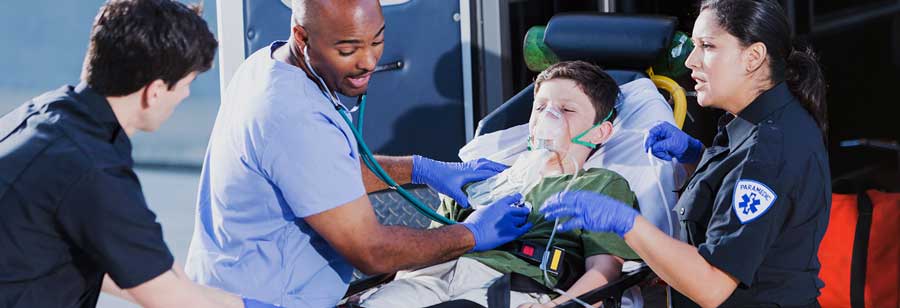A little girl clutches her throat as it closes from an allergic reaction. A teenager collapses to the ground from heat exhaustion. An elderly man trips over exposed cables in the sanctuary and hits his head on a nearby pew, knocking him unconscious.
A proper response can mean life or death in just a matter of minutes. Here is a basic prescription to begin creating an emergency medical response plan and team for your organization.
Start Your Medical Emergency Response Plan
- Identify and document the goals of the emergency response plan.
- Identify members of the response team and clearly outline their responsibilities.
- Share the plan with staff, and inform them of specific responsibilities.
- Post signs around your facility and explain key points of the plan with the general population.
- Assemble a well-stocked and up-to-date first aid kit and medical equipment.
- Place all kits and any additional medical equipment in a visible and clearly marked area.
- Check and inspect equipment regularly.
- Include medical equipment inspection on a maintenance checklist so that it is not overlooked—battery functionality, medication expiration dates, and inventory of supplies should all be checked.
- Have a list of emergency numbers near the telephone.
- Schools: Keep a record of medications and dosages/schedules, including allergies to medication. Have these readily available.
- For off-site activities and events, consider emergency response resources that are available and plan accordingly.
Some common warning signs and symptoms include:
- Difficulty breathing, shortness of breath
- Chest or upper abdominal pain or pressure lasting two minutes or more
- Unusual abdominal pain
- Fainting, sudden dizziness, weakness
- Changes in vision
- Difficulty speaking
- Confusion or changes in mental status, unusual behavior
- Any sudden or severe pain
- Uncontrolled bleeding
- Severe or persistent vomiting or diarrhea
- Coughing or vomiting blood
- Suicidal or homicidal feelings
CASE STUDY: A Medical Emergency Response Plan in Action
It is estimated that more than 20 million people in the United States have diabetes, with approximately 6 million individuals unware they are affected. People with diabetes may experience life-threatening emergencies from too much or too little insulin in their bodies. What would a medical emergency response plan for diabetics look like in action?A medical emergency response plan begins with the emergency response team recognizing the signs of hypoglycemia (low sugar level) and hyperglycemia (high level of sugar). The ability to recognize these can help prevent insulin shock and a diabetic coma.
Symptoms of insulin shock include:
- Weakness
- Rapid pulse
- Fast breathing
- Pale, sweaty skin
- Headache, trembling
- Odorless breath
- Numbness in hands or feet
- Hunger
- Weak and rapid pulse
- Nausea
- Deep, sighing breaths
- Unsteady gait
- Confusion
- Flushed, warm, dry skin
- Odor of nail polish or sweet apple
- Drowsiness, gradual loss of consciousness
- If the person is unresponsive, immediately call 911 or the local emergency number.
- If an unconscious person exhibits life-threatening conditions, place the person horizontally on a flat surface. Check breathing, pulse, and circulation. Administer CPR while waiting for professional medical assistance.
- If the person is conscious, alert, and can assess the situation, assist him/her with getting something to eat or drink that contains sugar or the necessary prescription medication.
- If the person appears confused or disoriented, give him/her something to eat or drink and seek immediate medical assistance.
Save A Life With Emergency Planning
A recurrent theme in emergency and disaster response planning methods is the need for flexibility. This includes the use of response actions that are appropriate for a particular crisis. Hazard exposure, population, staffing, and available resources are always changing. Church and school leadership should establish a schedule to review medical emergency response plans on a regular basis. This will help ensure everyone is ready to face the medical emergencies that will inevitably arise.DISCLAIMER: This information is not intended to replace the advice of a doctor. Adventist Risk Management, Inc. disclaims any liability for the decisions you make based on this information.

